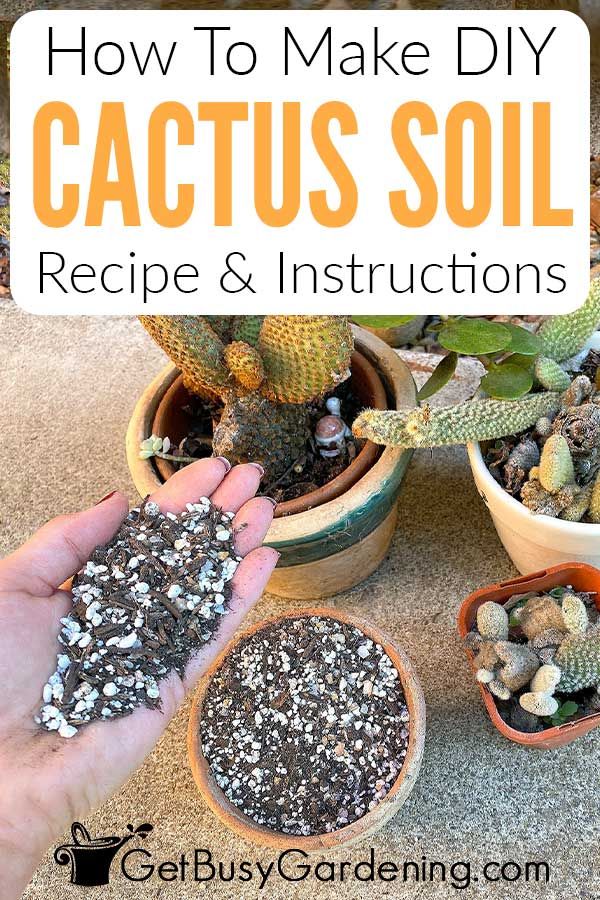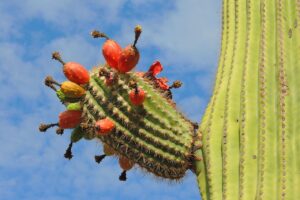When it comes to cultivating cacti, enthusiasts often observe that the type of potting soil mix plays a pivotal role in the health and vitality of these intriguing plants. Many may wonder why such seemingly minute details, like the soil composition, can have such profound implications on the growth success of cacti. The answer lies in the unique ecological adaptations of these desert dwellers.
Understanding the origin of cacti helps shed light on their specific soil requirements. Native to arid environments, these succulents have evolved to thrive in conditions with minimal water and considerable drainage. It is essential to replicate these conditions in cultivation, which begins with selecting or creating a suitable potting soil mix tailored to their needs.
Establishing the Ideal Potting Soil Blend
The foundation of any successful cactus growing endeavor is a well-balanced potting soil mix that mimics the natural substrate of their native habitats. Such a blend primarily consists of components that promote excellent drainage and prevent root rot, which is a common adversary for cactus plants.
The core ingredients for a quintessential cactus potting mix often include the following:
Sand: A significant proportion of your mix should include coarse sand, as it facilitates drainage and airflow. This ingredient is crucial for mimicking the gritty soil found in the wild. Utilizing horticultural sand rather than beach sand is recommended, as it is free from contaminants and provides an appropriate particle size.
Pumice or Perlite: Both pumice and perlite serve a dual purpose in cactus soil blends. These lightweight volcanic materials provide aeration while retaining some moisture. Their porous nature allows roots to breathe, mitigating the risk of suffocation that can arise from overly dense soils.
Organic Matter: While most cacti are not particularly fond of rich organic matter, a small amount of compost or well-rotted leaf litter can enhance nutrient availability. This addition provides essential macronutrients, grounding the potting soil and promoting healthy growth without compromising drainage integrity.
Crafting Your Signature Cactus Soil Mix
Creating your own cactus potting soil mix is both a science and an art. Customizing the ingredients allows you to fine-tune the blend according to your specific cactus species and growing conditions. Here are some popular formulations for consideration:
Basic Potting Mix: Combine two parts coarse sand with one part perlite or pumice and one part organic matter. This simple combination provides a solid foundation that balances drainage and nutrient content.
Sand-based Mix: For cacti preferring extreme driness, increase the sand ratio to three parts while maintaining a single part of perlite or pumice and a splash of organic matter. This mix closely resembles desert soil and provides maximum water retention capability.
Recipe for Succulent Surge: Consider a blend that features equal parts sand and pumice. By forgoing organic matter, this mix is geared towards those cacti that might become overly sensitive to moisture levels. Such a composition encourages rapid drainage for cacti that flourish without excess humidity.
The Importance of Container Choice
While the potting mix is undeniably vital, the choice of container is equally significant in creating the ideal environment for your cacti. Opt for unglazed clay pots, as they facilitate moisture evaporation and help maintain an optimal balance between hydration and dryness. Additionally, ensure that your containers have adequate drainage holes to prevent any possibility of standing water.
With the right potting mix and container, you’re setting the stage for your cacti to not only survive but thrive. However, that success hinges not just on the components of the soil and pot but also on an understanding of your particular plant’s needs.
Recognizing Species-Specific Needs
Different cactus species exhibit varying tolerances and preferences regarding soil conditions. For example, desert-dwelling species such as the Echinopsis and Ferocactus thrive in sandy mixes, while epiphytic cacti like the Christmas cactus enjoy more moisture-retentive soil. Conducting thorough research on the specific requirements of your cacti is fundamental to achieving optimal results.
Moreover, altering potting soil for specific growth stages can be beneficial. Young cacti may require a mix with more organic material to establish a strong root system, whereas mature specimens often thrive in sand-heavy mixtures that mirror the arid environment they naturally inhabit.
Maintenance and Monitoring
Once established, it is essential to regularly monitor your potting soil’s condition. Signs of excessive moisture retention, such as fungal growth or yellowing leaves, indicate the need for a more porous mix. Conversely, if the soil appears too dry or decomposed, amendments may be warranted to restore balance.
In conclusion, the significance of a customized potting soil mix in cactus cultivation cannot be overstated. It directly influences the health, growth, and resilience of these extraordinary plants. By blending appropriate ingredients, selecting the right containers, recognizing species needs, and maintaining vigilance, cactus enthusiasts can create a microhabitat that leads to flourishing, vibrant plants. The mesmerizing journey of nurturing cacti begins with the very soil they are planted in, creating a rewarding and fulfilling horticultural experience.





Leave a Comment